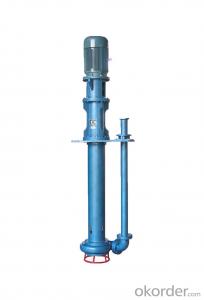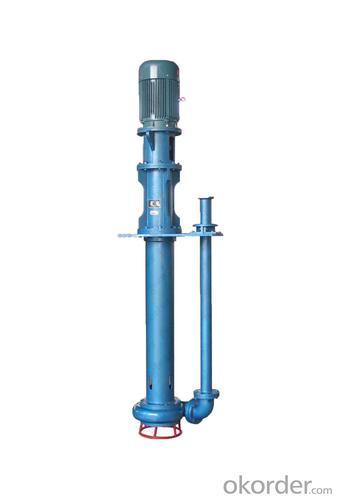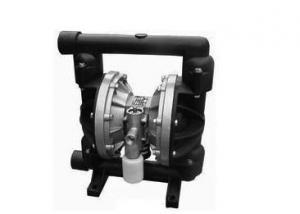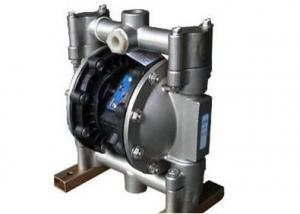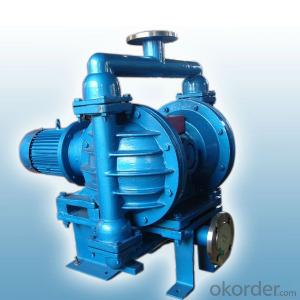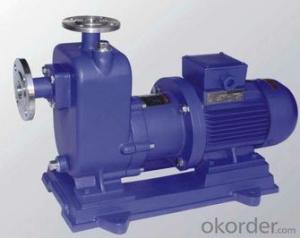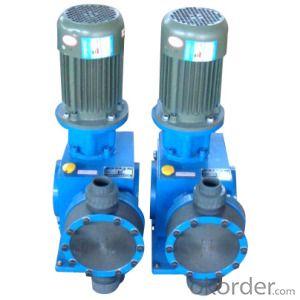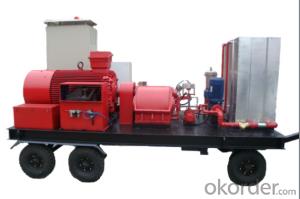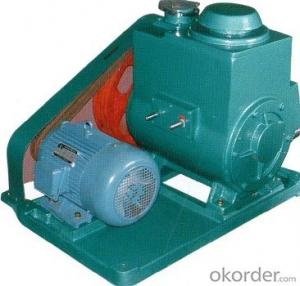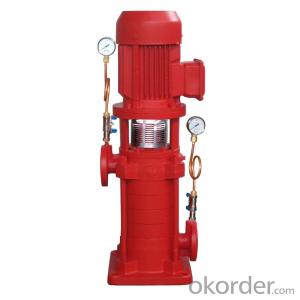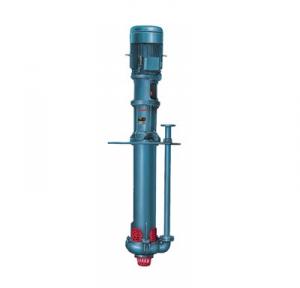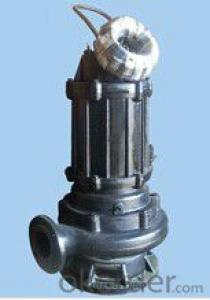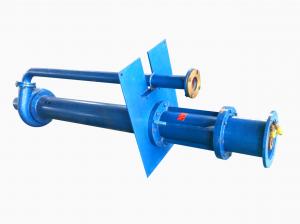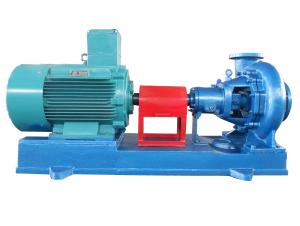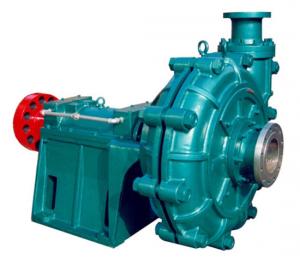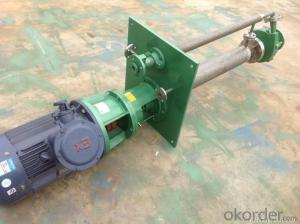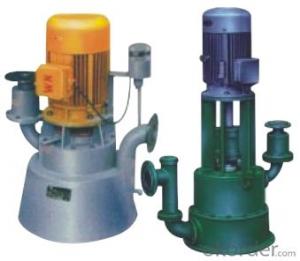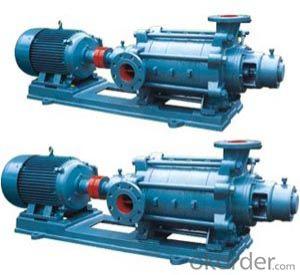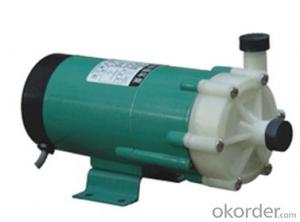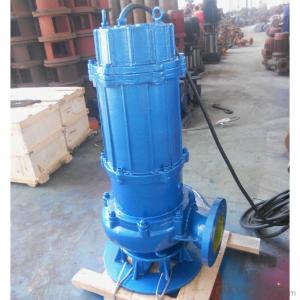YZ Submersible Slurry Pump
- Loading Port:
- China Main Port
- Payment Terms:
- TT OR LC
- Min Order Qty:
- -
- Supply Capability:
- -
OKorder Service Pledge
OKorder Financial Service
You Might Also Like
1 ,Feature :
YZ Series Slurry Pump is single stage ,single Suction (Suspension-Type ) pump ,it is connect with water power parts by bear seat ,supporting seat connecting tube .Liquid is exhaust out by Exhaust Pipeline component,Impeller of pump is designed semi-opened,Assigned an mixing blade ( propeller) in impeller blade extending .The mainly characteristic is pump shaft under liquid have enough stiffness , it is doesn't install bear between impeller and pump cover , it doesn't take bear seal,
so this pump can transmit Higher concentration rigid granules (particles) mediums.
This pump can input liquid on depth 800-2000mm
We can install an suction tube If you need . Shaft seal is running by submersible Pump insert into liquid , No Bear Seal , Transmit device by Motor installed Motor supporting and undertaking Seat , connecting with pump by coupling .
2 ,Application Field:
This series Pump widely application on environmental protection ,Municipal Engineering,Thermal power plant,Gas coking plant,Refinery plant ,Steelmaking plant,Mining ,Paper industry,The cement factory,food factory, printing and
dyeing industry to extract Dope ,heavy oil, Oil residue,Dirty liquid, mud, Mortar,The flow sand and urban sewage floating sludges , contained coal or ash in liquid. It is also can be used as chemical, pharmaceutical and other
industries suction fluid containing sand slag material and corrosive liquids. YZ can also transfer heat Temperature (480 degree ) of kerosene, crude oil, asphalt, oil Residue and other working conditions.
3,Model Sense :
Model No :80YZ80-20A
YZ-Submersible Slurry Pump
80-Outlet Diameter :(mm)
80-Pump Designed Flow :(m3/h)
20-Pump Designed Head :(m)
A- Impeller dissection by one time
- Q: Can an air pump be used for inflatable construction equipment?
- Indeed, inflatable construction equipment can indeed utilize an air pump. Pneumatic tools and temporary structures, commonly found within the realm of inflatable construction equipment, greatly depend on compressed air for optimal functionality. An air pump, also referred to as an air compressor, is purposefully crafted to produce compressed air, enabling it to effectively inflate and empower these specific types of equipment. By providing a steady stream of pressurized air, the air pump plays a vital role in both inflating and preserving the form and stability of the construction equipment.
- Q: Are there air pumps with built-in pressure gauges?
- Indeed, on the market, one can find air pumps equipped with integrated pressure gauges. Such air pumps have been specifically designed to offer both convenience and precision in the measurement of pressure when inflating tires, sports balls, inflatable toys, and various other inflatable items. With the inclusion of a built-in pressure gauge, users can effortlessly monitor and regulate the air pressure, guaranteeing a precise and secure inflation process. Consequently, the requirement for a separate pressure gauge is eliminated, simplifying the overall inflation procedure. Consequently, air pumps featuring built-in pressure gauges are widely favored by consumers owing to their practicality and effectiveness.
- Q: Can an air pump be used for inflatable water slides for lakes?
- Yes, an air pump can be used for inflatable water slides for lakes. In fact, an air pump is essential for inflating and maintaining the proper air pressure in the water slide. The air pump provides a continuous stream of air into the inflatable structure, allowing it to stay inflated and provide a safe and enjoyable sliding experience. It is important to ensure that the air pump used is suitable for the size and type of water slide being inflated, as different slides may require different amounts of air pressure. Additionally, it is crucial to follow the manufacturer's instructions and safety guidelines when using an air pump for inflatable water slides to ensure proper inflation and prevent any accidents or damages.
- Q: Can an air pump be used for inflating inflatable movie screens?
- Inflatable movie screens can indeed be inflated using an air pump. In fact, it is one of the most popular and convenient methods for inflating such screens. In the market, there are readily available air pumps that are specifically designed for inflatable structures like movie screens. These pumps are usually powerful enough to quickly and efficiently inflate the screen to the desired shape and size. Additionally, they often come with various nozzles and attachments to fit different types of inflatable screens. It is crucial to ensure that the air pump is compatible with the specific screen being used, as different screens may require varying levels of air pressure and flow. All in all, an air pump is a practical and efficient tool for inflating inflatable movie screens.
- Q: Can an air pump be used for inflating airbags in cars?
- No, an air pump cannot be used for inflating airbags in cars. Airbags in cars are typically inflated by a combination of sensors, an inflator, and a chemical propellant. This system is specifically designed to rapidly inflate the airbag in the event of a collision, ensuring the safety of the occupants.
- Q: How durable are air pumps?
- Air pumps are generally quite durable, designed to withstand regular use and last for a long time. However, the durability may vary depending on the brand, quality, and maintenance of the pump. It is important to choose a reputable brand and ensure proper care and maintenance to maximize the lifespan of an air pump.
- Q: What is the maximum weight an air pump can lift?
- The maximum weight an air pump can lift depends on the specific air pump's capacity and specifications. It is important to refer to the manufacturer's guidelines, as different air pumps have varying lifting capabilities.
- Q: Do air pumps require any maintenance?
- Air pumps, to ensure they function properly, necessitate some maintenance. Routine maintenance consists of filter cleaning, inspection and replacement of worn-out parts, lubrication of moving components, and overall pump condition examination. It is crucial to maintain cleanliness of the air pump to prevent clogs and minimize part deterioration caused by debris and dirt. Furthermore, regular maintenance aids in early detection of problems or potential issues, enabling timely repairs and averting expensive breakdowns.
- Q: When the air pump starts, it seems that there is not enough strength, so the rhythm is very slow, and then it does not turn. It seems to be the owner of the card. That's the case. Thank you very much for the help of experienced people..
- If the motor and pump with no problem, and is directly connected through the shaft, when starting the motor current should be increased, a long time to burn the motor, so attention must be paid to the operation time of the motor in the test and inspection, and strict control of motor current.If the motor and the air pump are connected by belt, check that the belt is loose Adjust the tension of the belt.If the above problems are normal, it is necessary to disassemble the air pump, check the bearing of the lower air pump is good, especially the lubrication state of the bearing. General rotating machinery failure, most of which are caused by poor lubrication, if the bearings are worn, it is necessary to replace; if the lubrication is bad, it is necessary to clean bearings, re lubrication. But as you describe the pump running with a rattling noise, I think the bearings of the pump should be replaced, because there was no refueling and maintenance for a long time. Because the pump bearing wear, pump will appear large vibration in the operation set, then we should pay attention to whether there is a collision phenomenon between the impeller and the volute pump, if any will repair repair, otherwise the clearance between the impeller and volute large, air pressure does not go on.
- Q: Hello, about the gas pump for a long time, (paint) water problems. You say that the air pump under the water FA open, refers to the water separation?
- The best air pump will always have this kind of thing! I changed a few times as the water! Then, add a gas tank, just fine! But things are pretty much the same! The only double or 3 lots of heavy water! To solve the problem!
Send your message to us
YZ Submersible Slurry Pump
- Loading Port:
- China Main Port
- Payment Terms:
- TT OR LC
- Min Order Qty:
- -
- Supply Capability:
- -
OKorder Service Pledge
OKorder Financial Service
Similar products
Hot products
Hot Searches
Related keywords
